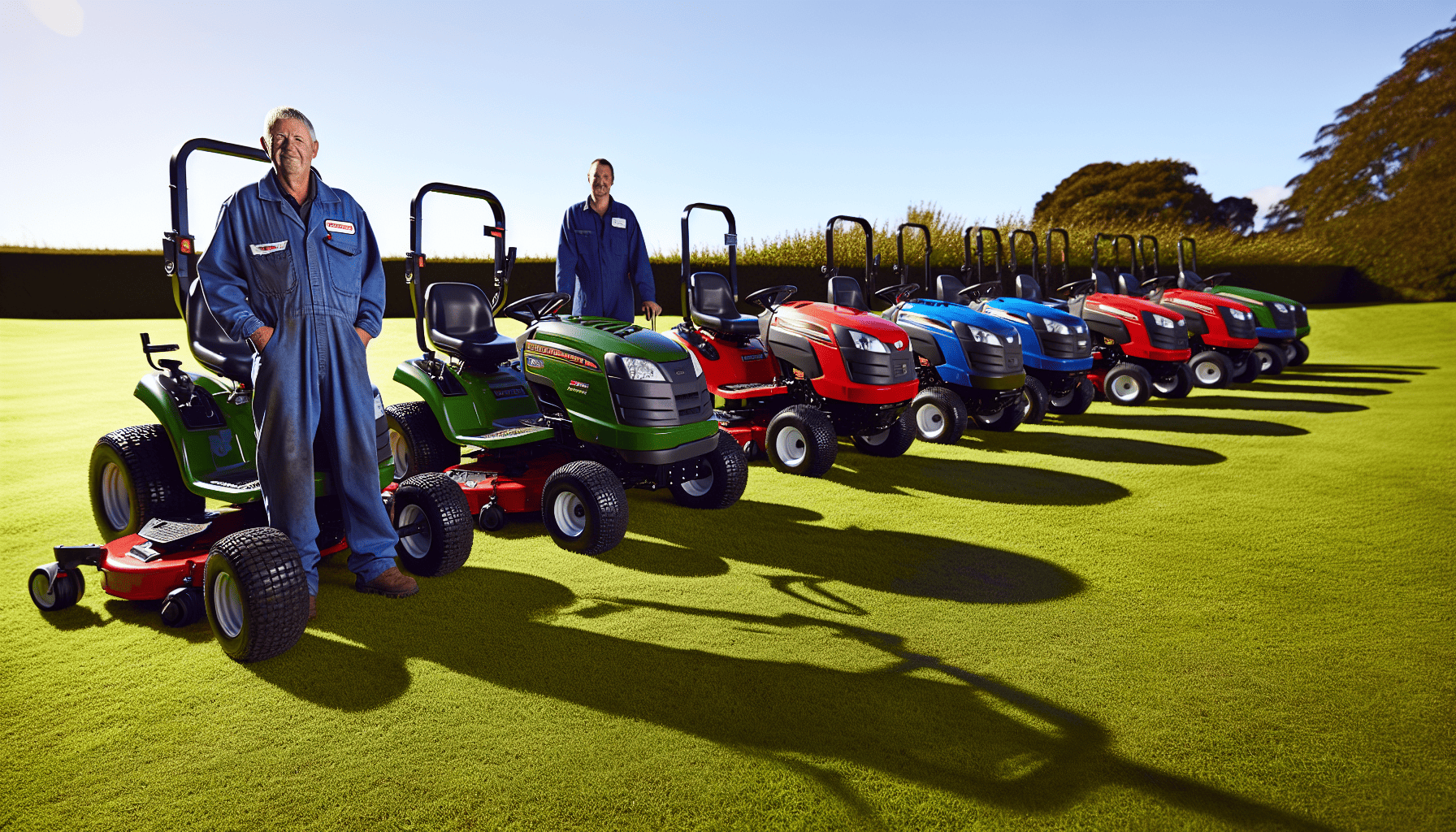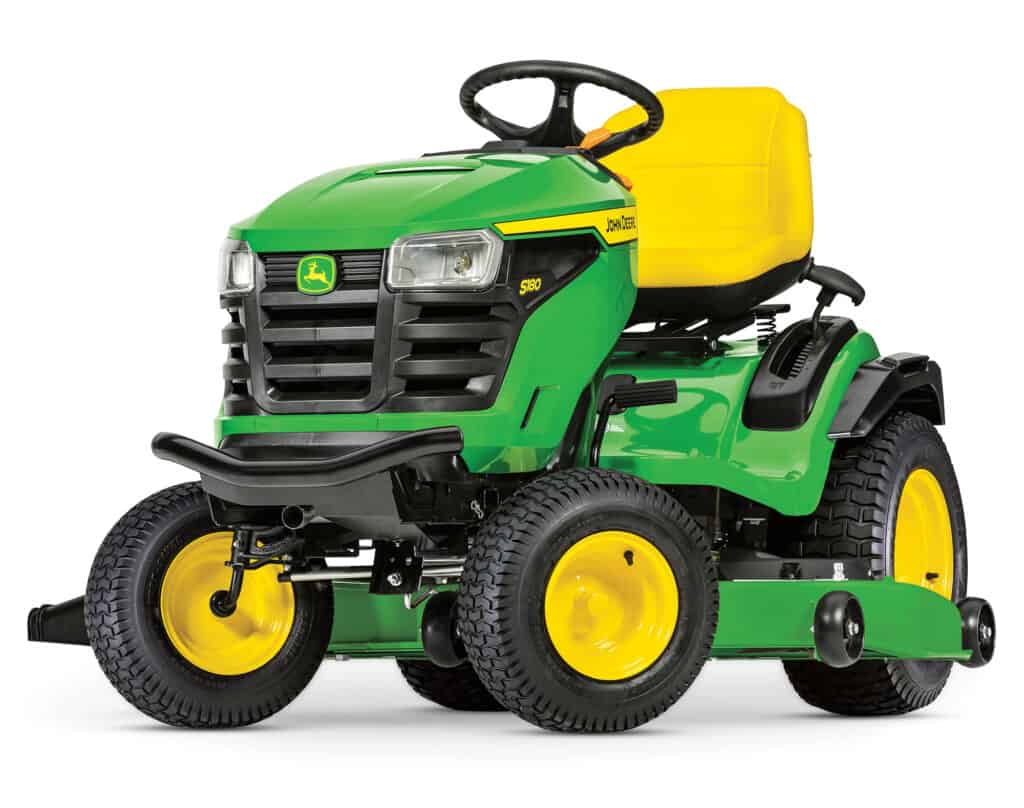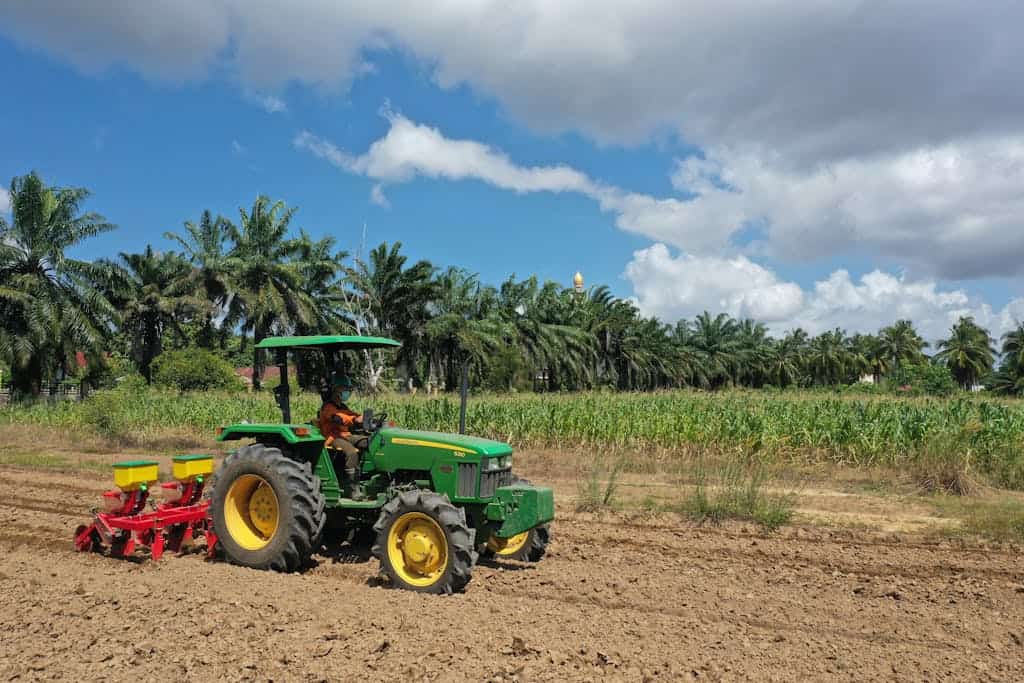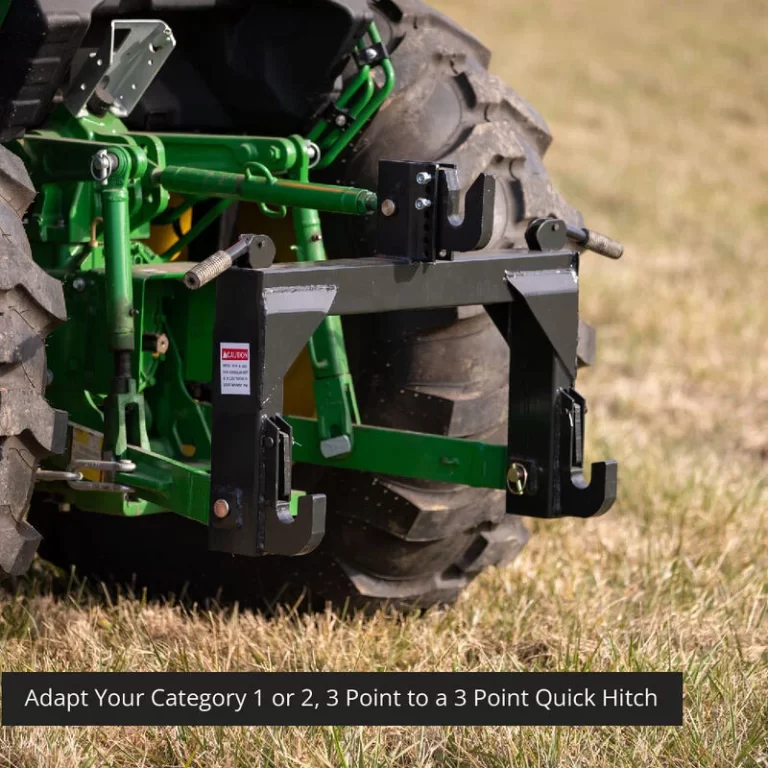Best Lawn Tractors of 2024: A Comprehensive Guide

Need a lawn tractors but not sure where to start? Our guide cuts through the noise to deliver straight facts on the best lawn tractor models of 2024. No fluff, just the essentials: performance, durability, and value. Approximately 75% of U.S. households possess a lawnmower of some sort, and about 40-45% have a riding mower. If you are joining these ranks or upgrading what you have, start here to equip yourself with a lawn tractor that fits your landscape and budget.
I have acres of land and have a compact utility tractor for a lot of the work I do to maintain the pastures and surrounding landscape. But it is too big to cut the grass in the front and back yard. While my back yard follow’s the No Grass Movement principles and is covered in raised bed gardens, my front yard is nothing but fast growing grass. For a year I had an electric push mower but it was taking me over an hour to cut just the front yard.
So I incorporated a lawn tractor into my fleet. And I love it so. While I still favor my large tractor for big needs, my lawn tractor is fast, convenient, versatile, and relatively small. Like all equipment, there are pros and cons of each type, so here is my selection of top lawn tractors for the year. Whatever you pick enjoy your time on those beautiful sunny days.
Just to be honest here, I am including Zero Turn mowers in this list and will explain why later.
Read about other types of tractors you may want to consider.
Snapshot of the Best Lawn Tractors

Among a plethora of lawn tractors, four models distinguish themselves in 2024 as the best lawn tractors:
Best Overall Performer: John Deere S180
The Cub Cadet RZT-L Zero Turn Riding Mower is renowned for its exceptional zero-turn capability, making it one of the best options available for this feature. With its efficient and precise maneuverability, this mower delivers an exceptional cutting experience.
Consider Ryobi RY48111 48-Volt Zero Turn Electric Riding Mower as the best electric option. It offers great performance and convenience for mowing.
Best for Commercial Use: Toro 75742 TimeCutter Commercial Riding Mower
The average price of a new lawn tractor in the US ranges from $1,500 to $4000, with high-end models exceeding this.
John Deere S180: The Best Overall Performer

Price: $3,500
Specifications
V-twin engine with up to 26 horsepower
54-inch Edge Lawn Deck
Pros:
Powerful and efficient performance
Wide cutting path with 11 height positions
Remarkable maneuverability and control due to pedal-operated hydrostatic transmission and 18-inch turning radius
Cons:
High price point
Its powerful engine and wide cutting path make mowing not only efficient but also enjoyable. The S180 allows for a wide cutting path and offers 11 different height positions to facilitate a variety of grass lengths. This means you get a clean, even cut no matter the condition of your lawn.
Nevertheless, some might find the high price point a bit discouraging. But considering its performance and the convenience it offers, I believe it’s a worthy investment. Plus, the Easy Change 30-Second Oil Change System and features like the Electric PTO and Heavy Duty Hydrostatic Transmission add to its ease of use and operational convenience.
Rating:
Performance: 5/5
Design: 4.5/5
Value for Money: 4/5
Cub Cadet RZT-L Zero Turn Riding Mower: The Best in Zero-Turn Capability

Price: $3,299
Specifications
Zero-turn capability
42-inch deck width
Gas-powered
Pros:
Comfortable ride
Reasonable price point
Easy maintenance thanks to Bluetooth technology
Cons:
Issues with wiring harness malfunctions
Short lifespan for drive belts and deck spindles
Steering linkage castings breaking
For larger jobs, the Cub Cadet RZT-L Zero Turn Riding Mower emerges as one of the best lawn tractors my option. Its features include:
Efficiency and performance that make tackling big tasks a breeze
- A good size that is very maneuverable around the yard in tight spaces and around objects.
Zero-turn capability, making mowing a breeze even for those new to zero-turn mowers
However, it doesn’t come without its flaws. I’ve had a couple of issues with this mower, including wiring harness malfunctions and a shorter lifespan for drive belts and deck spindles. To ensure consistent performance and longevity, I’ve found that servicing the mower more frequently than the manufacturer’s manual suggests is a must. Despite these issues, its comfort and value for the price make it a top contender in my book.
It does a great job mulching, but I also have a bag on this to use the grass for composting.
Rating:
Performance: 4/5
Design: 3.5/5
Value for Money: 4/5
Ryobi RY48111 48-Volt Zero Turn Electric Riding Mower: The Best Electric Option

Price: $2,999 Specifications
Zero emissions
Operates quietly at 70 decibels
38-inch cutting width
Pros:
Environmentally friendly
Significant cutting capacity
Ease of use
Cons:
High price point
Comfort issues with the seating
Variable battery performance over time
Being a proponent of green technology, I highly recommend the Ryobi RY48111 48-Volt Zero Turn Electric Riding Mower as the best electric riding mower if you’re considering electric riding mowers. It produces zero emissions and operates quietly – a winning combination for the environmentally conscious homeowner.
Nonetheless, it does come with some disadvantages. Here are a few things to consider:
The high price point might be a deterrent for some
Some users have reported comfort issues with the seating
The battery performance seems to vary over time
Electric zero turn mowers like this Ryobi should be able to handle around an acre and 30-45 of ride time before recharging. If your yard and needs are within this realm, electric is the way to go.
I am a huge fan of electric lawn mowers. I still use my electric push mower in and around the back yard. While I do love the convenience of gas when dealing with large areas and all day chores, I would rather hear the birds, kids, and wind than a gas engine most of the time.
Rating:
Performance: 4.5/5
Design: 4/5
Value for Money: 3.5/5
Toro 77505 TimeCutter Commercial Riding Mower: The Best for Commercial Use

Price: $3,700
Specifications
50-inch mower deck
Gas-powered
Max cutting height of 4.5 inches
Pros:
Excellent cutting performance
Comfortable ride
Easy maintenance
Cons:
Lacks an hour meter and proper gas gauge
Performance issues on slopes
For commercial use, I would go with the Toro 75742 TimeCutter Commercial Riding Mower. Its excellent cutting performance, comfortable ride, and easy maintenance make it a reliable workhorse. However, the lack of an hour meter and proper gas gauge is a significant drawback. Despite these issues, its power and comfort make it highly suitable for commercial use.
Simplicity, maintainability, durability, and reliability are key to commercial mowers. Toro mowers shine in all these categories. And of course size. When large areas are necessary its hard to beat a 50″ deck. This is designed to take on large commercial areas with ease.
Rating:
Performance: 4.5/5
Design: 3.5/5
Value for Money: 4/5
Choosing Your Ideal Lawn Tractor: A Comprehensive Guide

Selecting the ideal lawn tractor could be daunting given the multitude of options available. But worry not! We’ve got you covered.
Consider the following factors when choosing a riding lawn mower:
The size of your lawn and the cutting width of the mower
The type of terrain you have (flat or hilly)
The mower’s mulching and bagging capabilities
The price range you are comfortable with
Don’t forget that during the mowing season, used gas riding mower models, as well as other riding lawn mowers, can be cost-effective and last many years with proper maintenance.
Lastly, consider the following factors when choosing a riding mower:
Comfort features, such as adjustable seats and cup holders
- Ease of handling
- Brand reputation and support.
The average price for a riding mower can vary widely from $2,000 up to $8,000, representing a significant financial decision. No matter what your decision though, I am positive you will not regret it.
What is a Lawn Tractor
A lawn tractor is a type of outdoor power equipment similar to a riding lawn mower but with a few key distinctions. They’re built around a robust frame, resembling a miniature garden tractor in design. Lawn tractors feature a traditional steering wheel interface making them ideal for those familiar with driving cars. These features make them better suited for yards with extensive mowing areas as well as additional jobs beyond simple grass cutting.
Lawn tractors boast larger, higher-powered engines and wider mowing decks when compared to standard riding mowers. This means they excel at covering ground quickly and efficiently. Additionally, many lawn tractors can also handle various attachments like utility trailers, dethatchers, aerators, and even snowblowers. This multi-purpose design transforms the lawn tractor into a year-round workhorse on a property.
What is the Difference between Lawn Tractor and Zero Turn Mowers
Zero-turn mowers offer speed and agility, excelling at navigating tight spaces with maximum mowing efficiency. Lawn tractors provide stability on slopes and greater versatility, capable of handling a wider range of tasks beyond cutting grass.
1. Steering and Maneuverability
- Zero-turn Mowers: Use two independent lap bars or levers to control the rear drive wheels. This allows the mower to rotate within its own footprint (hence, “zero-turn”), ideal for tight spaces and navigating around landscaping or trees.
- Lawn Tractors: Traditional steering wheel, similar to a car, results in a wide turning radius. Less suited for intricate maneuvering.
2. Speed and Efficiency
- Zero-turn mowers: Typically faster, especially on open lawns. Their agility often means faster mowing, even with slightly narrower decks.
- Lawn Tractors: Have good forward speed for wide spaces but aren’t as nimble, especially in tight areas.
3. Terrain
- Zero-turn Mowers: While agile, are less stable on slopes due to their drive system and can get stuck more easily.
- Lawn Tractors: Front-wheel drive gives them better grip on hills and uneven terrain.
4. Multi-Tasking
- Zero-turn Mowers: Primarily built for mowing. Some accept attachments, but the selection is more limited.
- Lawn Tractors: Designed for versatility. A robust range of attachments are often available for hauling, spreading, tilling, or snow removal.
Which is Right for You?
- Zero-turn: Perfect for properties with lots of obstacles, tight landscaping, and maximizing mowing speed.
- Lawn Tractor: Great choice for expansive properties, slopes, or if you plan to go beyond mowing with various attachments.
Things to Consider When Buying a Lawn Tractor
Several factors warrant your consideration when purchasing a lawn tractor. First, consider the size and terrain of your property. Hilly land and larger properties demand more horsepower and larger cutting decks for efficiency. If you do have hilly terrain then test drive a mower. There are definitely some that are more stable feeling than others. With a low center of gravity of zero turns, they tend to be a bit more stable, however seat shape and comfort are more noticeable than others.
I want to double down on the width factor. While I would love to buy the biggest mower I can get (which means getting done quicker right?), it is not practical. Take a measuring tape out into your yard and find all the nooks and cranies that will cause you issues, measure them and then get a rider a couple of inches smaller than that. Just cause you have 36 in between your raised beds, does not mean you are going to get a 36″ mower between them. Oh and don’t forget that grass shoot adds width.
Price should be considered when buying anything. You need to get what fits comfortably in your budget. However, these items are relatively expensive compared to a push mower. I would not say you should buy the most expensive, as I don’t personally think it matters for the average person. However, quality does matter when it comes to the engine and durability. There are plenty of used models for sale if price is a concern. Get the best you can for what you can afford as this is something you will likely use for the next decade or more.
Next, decide which features are vital for you and balance that against your price range. Also, consider the comfort and ergonomics – if you’ll be spending hours mowing, factors like seat comfort, controls placement, and ease of getting on/off the tractor matter.
Finally, research the brand’s reliability and the availability of local dealers for parts and service down the line.
How We Conduct Our Research
At Cannon Creek, we take providing trustworthy information seriously. With so many lawn tractor and zero turn mower options out there, knowing where to start can be daunting. Here’s how we crafted our reviews and recommendations:
- Expert & User Feedback: We began by scouring independent forums, speaking with homeowners, and engaging with professional landscapers. This gave us a ground-level view of what truly matters in a lawn tractor for different scenarios.
- Brand-Wide Exploration: We looked far beyond household names. While big names may garner quick recognition, often they’re not the only reliable and effective options.
- Features vs. Performance: We examined a variety of models with attention to more than just the specs on paper. Real-world usage, the quality of cut, durability, and overall ease of ownership were essential elements of our research.
- The ‘Long Haul’ Focus: While initial impressions are valuable, we prioritized researching brand track records for service support, parts availability, and the long-term experience of owners. A lawn tractor is an investment, and longevity played a key role in our evaluation.
- Open to Change: The outdoor equipment market is constantly evolving. We don’t rely on old reputations alone. We stay actively up-to-date on the latest models, innovative features, and technology changes to give you the most current information.
- Personal Use: We are a small farm, but I do have a habit of collecting toys. We have a variety of activities that we are able to utilize and test equipment. Many of the features we look for in these products are based on personal successes and failures in using these or like products.
There is never a perfect match to everything you need. That is why I have multiple machines on Cannon Creek Farm. So look out for the item that will fulfill most of your needs and maybe through a couple of custom upgrades to make it yours.
Where to Buy
Having discussed what to consider in a lawn tractor, let’s explore where to purchase one. You have several options.
When looking to purchase a tractor, there are several options to consider:
Big box retailers: These are convenient and offer some selection, but prices may be higher, and knowledgeable staff can be hit-or-miss.
Local tractor dealerships: These may offer expert advice, a wider selection, and potential future service support.
The used market: This can offer bargain prices, but buyer beware! Thoroughly inspect any used tractor and research fair market value beforehand.
Online marketplaces: These offer a wide selection, but be cautious of unseen machines.
Consider these options and choose the one that best fits your needs and budget.
Essential Extras
Upon acquiring your new lawn tractor, certain essential extras deserve your attention. Fuel stabilizer, especially if your region has seasonal use, can prevent fuel degradation and protect the engine. A tire gauge is crucial for maintaining proper tire pressure for good traction and even cutting. Additionally, a garden hose and deck cleaning attachment can be useful for cleaning the mower deck and keeping your equipment in top condition.
A basic toolkit with wrenches, sockets, and screwdrivers can handle adjustments and minor repairs on the go. A trailer or cart greatly expands the utility of your tractor for hauling tasks around the property. Finally, if storing outdoors, a protective cover reduces exposure to the elements and lengthens the life of your machine.
Don’t forget your bagger. This is great for picking up clipping or “raking” your yard. Most lawn tractors come with specifically designed bag systems, but there are universal systems that can be adapted if needed.
Storage
Proper storage of your lawn tractor can notably prolong its service life. The ideal option would be a garage or shed to keep your tractor completely out of the elements.
If outdoor storage is a must, here are some tips to keep your tractor in good condition:
Invest in a high-quality cover specifically designed for tractors.
For long-term storage, disconnect the battery or utilize a trickle charger to maintain its charge.
Consider placing tires on blocks or wood during winter storage to prevent flat spotting.
Lastly, either drain the gas tank completely for long-term storage or use fuel stabilizer to prevent deterioration.
Maintenance
Regular maintenance of your lawn tractor, including lawn mower maintenance and riding mower maintenance, is key to its optimal performance and extended lifespan. The owner’s manual outlines the specific intervals for oil changes, filter replacements, and other specific maintenance items. Here is a seasonal list of activities you should do to maintain your investment.
Spring (Pre-Season Preparation)
- Full Inspection: Thoroughly check for loose parts, worn belts, leaking fluids, tire pressure, and damaged components. Replace or repair as needed.
- Tip: Make a note of anything seeming worn so you can monitor it during the season for replacement.
- Oil Change: Change engine oil and filter following your mower manual’s guidelines.
- Tip: Fresh oil is crucial after winter storage for optimal engine lubrication.
- Replace Spark Plugs: Install new spark plugs for reliable starts and clean fuel burning.
- Air Filter: Clean or replace the air filter – a dirty one restricts airflow and affects performance.
- Sharpen/Balance Blades: Remove, sharpen, and balance mower blades. Dull blades damage grass, and improperly balanced blades cause vibration.
- Tip: Have a spare set of sharpened blades handy for a quick swap during the mowing season.
- Deck Cleaning: Remove caked-on grass and debris from the underside of the mower deck.
- Tip: A pressure washer makes this easy, but protect the electrical components.
Summer (During Mowing Season)
- Before Each Use: Quickly check oil level, tires, and look for any obvious leaks or damage.
- Clean Air Filter: Clean the air filter more frequently in dusty conditions.
- Grass Buildup: After mowing, clear grass clippings from the mower deck and engine to prevent overheating.
- Lubrication: Grease pivot points and bearings according to your owner’s manual.
- Watch for Issues: Be mindful of engine sounds, excessive vibration, or cutting quality for signs of developing problems.
Fall (Preparing for Winter)
- Fuel System: Add fuel stabilizer to the gas tank and run the engine to distribute treated fuel for easier spring starting.
- Tip: Alternatively, drain the fuel system completely before storage.
- Final Oil Change: Some recommend another oil change before storage to remove moisture and acids for engine protection.
- Battery: Remove the battery, clean terminals, and store in a cool, dry place. Consider a trickle charger or maintainer.
- Blades: Inspect blades carefully and sharpen or replace if needed.
- Deep Clean: Wash thoroughly, removing debris, and allow to dry fully to prevent rust.
- Proper Storage: Store the mower in a dry, covered area for protection from the elements.
- Touch Up Paint: Those nicks and scratches can easily turn into significant rust. A little touch up paint will go a long way in keeping your mower in tip top shape.
Consider Lawn Tractor Attachments
Mowing the grass is great but if you want to do much more you will need some attachments. Here is the following list of lawn tractor attachments that will make your life easier and get more from your investment.
- Bagging System:
- Collects grass clippings, leaves, and yard debris
- Keeps your lawn neat and reduces thatch buildup
- Lawn Sweeper:
- Similar to a bagger, but better for large-scale leaf/debris collection
- Can handle material that might clog bagging systems
- Dump Cart/Trailer:
- Huge boost in hauling capacity for mulch, soil, firewood, etc.
- Makes landscaping and yard maintenance tasks much easier
- Spreader:
- Evenly distributes fertilizer, seed, or ice melt
- Saves time and ensures consistent application
- Dethatcher:
- Removes the buildup of dead grass (thatch) from your lawn
- Promotes healthy grass growth
- Aerator:
- Creates small holes in the soil, improving water and nutrient penetration
- Reduces compaction and encourages a lush lawn
- Snow Blade/Blower:
- Turns your lawn tractor into a winter warrior for clearing driveways and paths
- Blade is simpler, snow blower handles deeper accumulations
The utility of lawn tractors extends beyond just mowing. With a small trailer or cart, your tractor becomes a powerful mover of mulch, firewood, landscaping supplies, etc. Many bagging systems or lawn sweepers attach to tractors, clearing leaf-covered lawns with ease.
Summary
We’ve covered a lot of ground in this blog post, from the top-performing lawn tractors of 2024 to how to choose the perfect one for you, where to buy, essential extras, storage, and maintenance. It’s clear that owning a lawn tractor is a significant investment, but with the right choice and proper care, it’s an investment that can pay off in terms of time saved, convenience, and the pride of a well-maintained lawn.
Frequently Asked Questions
What is the most reliable brand of lawn tractor?
John Deere is considered a top brand for reliability due to its long history of quality manufacturing, durable construction with heavy-duty components, excellent parts availability, extensive dealer support, and strong resale value. However, it’s important to research specific models and compare them to other reputable brands based on your individual needs and budget.
What is the most versatile lawn tractor?
It’s tough to crown a single “most versatile” lawn tractor due to different property needs. However, strong contenders typically feature a mid-range horsepower engine suitable for both mowing and towing, have attachment compatibility for tasks like hauling or light grading, offer various cutting deck sizes for adaptability, and prioritize features like tight turning radius for better maneuverability. Brands like John Deere and Cub Cadet excel in creating these well-rounded machines.
What should I consider when buying a lawn tractor?
- Yard size and terrain: This dictates the required power (horsepower) and cutting deck size.
- Features: Decide whether bagging, mulching, and zero-turn capabilities are important for your needs.
- Budget: Balance essential features against your available budget.
- Comfort: Prioritize adjustable seats and ease of operation if you’ll be mowing for extended periods.
- Brand reputation: Research brand reliability and local dealer support for future service and parts availability.
Where can I buy a lawn tractor?
You can buy a lawn tractor from big box retailers, local tractor dealerships, the used market, and online marketplaces. Consider checking these options to find the best deal for your needs.





